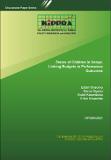| dc.date.accessioned | 2022-06-28T06:23:25Z | |
| dc.date.available | 2022-06-28T06:23:25Z | |
| dc.date.issued | 2021 | |
| dc.identifier.uri | https://repository.kippra.or.ke/handle/123456789/3721 | |
| dc.description.abstract | Childhood is a critical period for the development of both social and human capital and forms a firm foundation for preparing inclusive and sustainable societies. It is estimated that 40 per cent of the world population is composed of children, and developing countries continue to capture an increasing share. In Kenya, for instance, the Kenya Population and Housing Census (KPHC) 2019 put the population of children aged 0-17 years at 51 per cent. Evidence suggests high returns on investment on children particularly when policy interventions are aimed at enhancing the inclusivity of children, particularly the disadvantaged, in the provision of social services. This signifies that the issues of children need to be critically addressed through policy, planning, and budgeting. The paper presents an analysis of children's sensitive spending status in the context of public finance management for children, and linkages between spending and the performance of key outcome indicators in socio-economic well-being, health, nutrition, education, child protection, and water and sanitation (WASH) sectors. | en |
| dc.language.iso | en | en |
| dc.publisher | Kenya Institute for Public Policy Research and Analysis | en |
| dc.relation.ispartofseries | DP/260/2021; | |
| dc.subject | Affordable Healthcare | en |
| dc.subject | Maternal Health | en |
| dc.subject | Sanitation and Hygiene | en |
| dc.subject | Family Planning | en |
| dc.subject | Early Childhood Development | en |
| dc.title | Discussion Paper No 260 of 2021 on Status of Children in Kenya: Linking Budgets to Performance Outcomes | en |
| ppr.contributor.author | Onsomu, Eldah: Ngeno, Haron: Kwamboka, Violet & Khaemba, Elton | |

